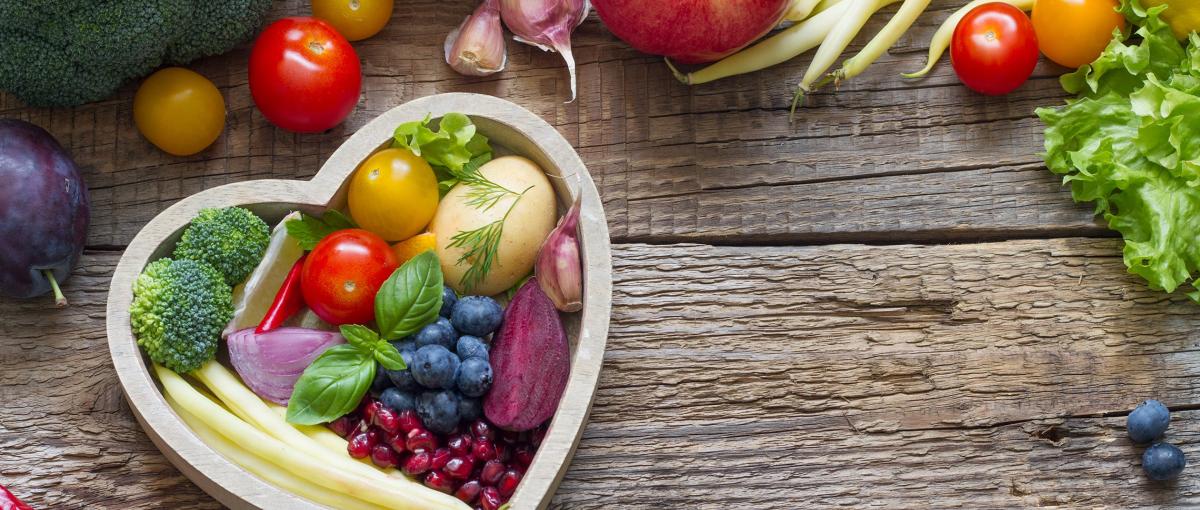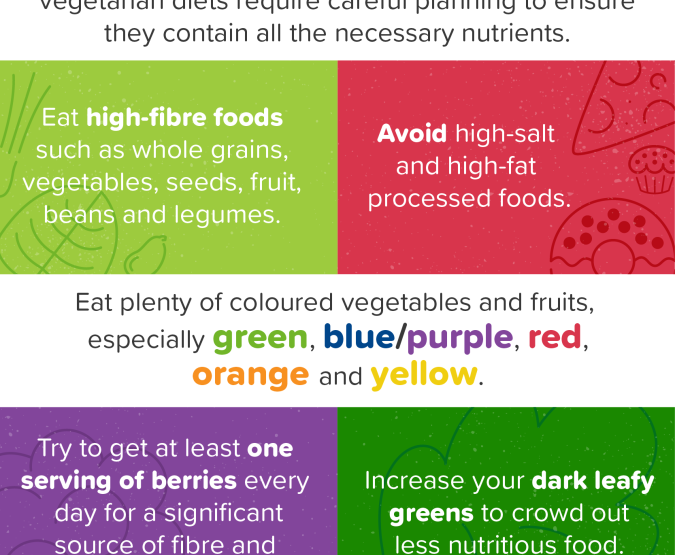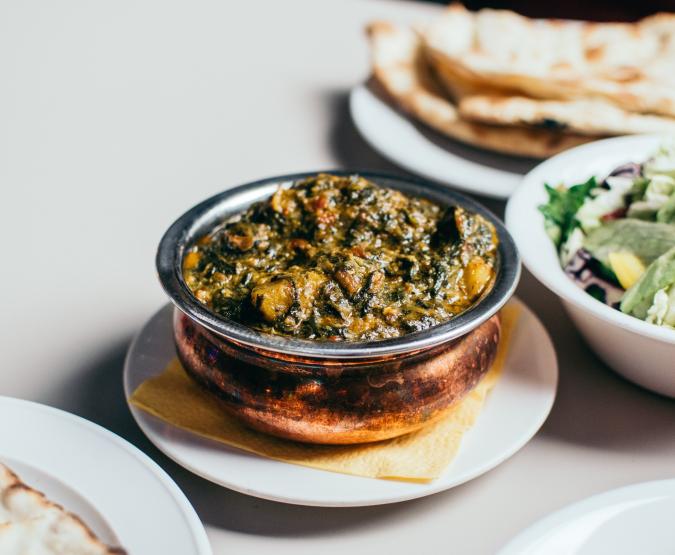Being a vegetarian is more than eating your greens
A balanced meat-free diet takes careful planning

March 18, 2019
By Lisa Brunelle, Communications Advisor, Covenant Health
A growing movement in the vegetarian community is seeing participants refer to their diet as a whole foods, plant-based diet rather than vegetarian or vegan.
Why? Because there are “French fry” vegetarians who eat few whole fresh foods and too many processed animal-free foods.
If you eat mostly breads, fried foods, cheese, white pasta and sweets and very little vegetables and protein, you may be missing important nutrients in your diet. Dietitians also suggest limiting sweet, fatty or salty foods on any eating plan.
“You can be vegetarian and be healthy because there’s protein available in foods other than meats. You can be healthier or less healthy depending on your approach to a vegetarian diet,” says Amanda Heinrich, Outpatient Dietitian at the Grey Nuns Community Hospital.
People need to eat a wide range of colourful, plant-based foods to get all the necessary vitamins and nutrients.
“Studies have shown that a well-planned vegetarian diet can help protect against a range of health issues such as heart disease, high blood pressure, Type 2 diabetes, obesity, some cancers and high cholesterol,” says Brianna Meghawache, Inpatient Dietitian at the Grey Nuns Community Hospital.
Healthy eating tips for a vegetarian or vegan
Remember that just like all healthy patterns of eating, vegetarian diets require careful planning to ensure they contain all the necessary nutrients.
- Eat high-fibre foods such as whole grains, vegetables, seeds, fruit, beans and legumes.
- Avoid high-salt and high-fat processed foods.
- Eat plenty of coloured vegetables and fruits, especially green, blue/purple, red, orange and yellow.
- Try to get at least one serving of berries every day for a significant source of fibre and vitamin C.
- Increase your dark leafy greens to crowd out less nutritious food.
- Aim to eat more vegetable servings than fruit each day.

Amanda has been a vegetarian for 25 years and Brianna for 10 years, so while they’re experts in nutrition as dietitians, they also have personal vegetarian experience to back up their training.
“At the beginning when I transitioned my diet, I struggled a lot because I didn’t really have the cooking skills for making great-tasting plant proteins,” says Brianna. “I was committed, but the meals I made weren’t necessarily the most nutritious, so I had to do some learning on my own to make sure I was eating a healthy diet.”
Brianna learned how to create a diverse vegetarian menu by gathering cookbooks and experimenting in the kitchen. She looked into traditional diets around the world that were mostly plant-based.
“I found traditional cooking from various ethnicities helped me explore my own preferences. This experimentation and learning helped me create healthy meals I enjoy,” says Brianna. “My favourite cuisines include South Asian Indian, Lebanese, Japanese and Thai cuisines, mostly due to the flavours. I also like them because of the versatility found with key ingredients like beans, soy and lentils.”
Brianna says the benefits of the herbs and spices in these cuisines go beyond flavour, supporting health through their anti-inflammatory properties.
It can be challenging to come up with diverse ways of increasing your intake of vegetables and fruit, says Amanda.
“I often recommend halfyourplate.ca to my clients who want to increase their fruit and vegetable intake. It’s great for different recipes. I love how they explain the common vegetables and fruits, ways to store them, when to buy them in season and how to cook them,” says Amanda. “I think a lot of people are like me, and grew up with a certain number of vegetables and fruits in their diets, and they want to expand that a little.”
Amanda is the only one in her family who’s vegetarian, so she’s come up with some strategies to make sure everyone’s preference is accommodated because she believes both ways of eating can be healthy when well planned.
“We precook and freeze meals in single portions to help us have healthy meals available,” she says.
When it comes to meat-free eating, people may not realize they need a larger amount of plant proteins like beans and lentils to get a healthy amount of protein in their diet.
“My favourite thing about eating a healthy whole foods, plant-based diet is that often you can eat a higher volume of food,” says Brianna. “With some basic cooking skills, cooking plant-based meals at home can be very easy!”
Some nutrients your body needs are more commonly found in animal products and require more planning by vegetarians. These include protein, calcium, vitamin D, iron and vitamin B12. Below is a list of foods that are rich in these vitamins and nutrients:
- Plant-based proteins include legumes, beans, lentils, tofu, tempeh, edamame beans, seeds and some whole grains.
- Non-dairy, calcium-rich foods include fortified non-dairy beverages, calcium-fortified tofu almonds, leafy greens, currants, amaranth, oranges, broccoli and collard greens.
- Like the majority of Canadians, people following plant-based diets usually require a vitamin D supplement. Plant sources of vitamin D are found in some mushrooms and fortified foods.
- Vegetarians need to eat more iron-rich foods because the iron in these sources is harder for the body to use. When having iron-rich foods, such as dark green vegetables, quinoa and legumes, add vitamin C-rich foods and avoid tea or coffee to increase the amount of iron your body absorbs.
- A tablespoon of fortified nutritional yeast such as Red Star brand can help you meet your vitamin B12 needs. You can add nutritional yeast to a sauce, stew, soup or over potatoes.
Tips for eating out
- Plan ahead when eating in a restaurant. Look at the menu beforehand and make a plan.
- If you know something is missing from your menu selection in advance, eat something before or after to compensate for the missing nutrients.
- If you're going for a meal at a friend's or relative's home, offer to bring a dish you want to share so you know you'll have something to eat.
- Let people know about your food preferences in advance. Most people are willing to try to accommodate your needs.
